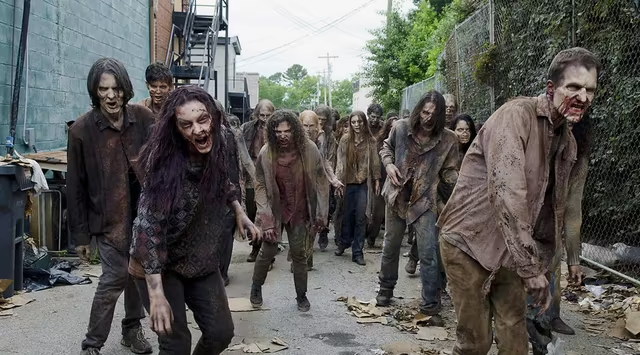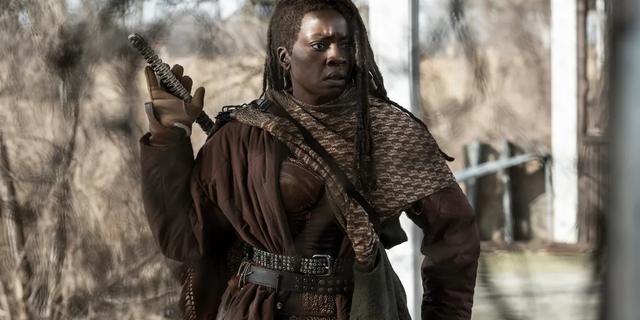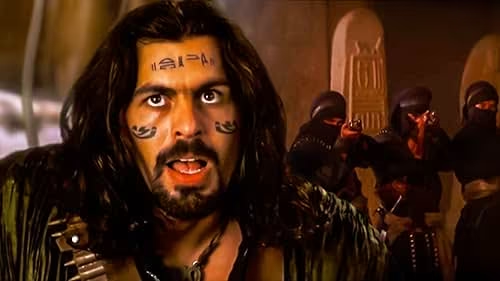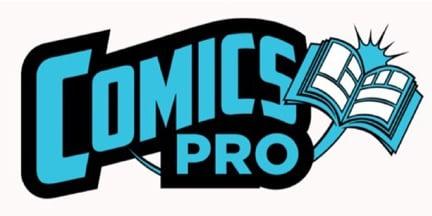If you click on a link and make a purchase we may receive a small commission. Read our editorial policy.
In today’s world of tradwives, The Witcher: Crossroads of Ravens isn’t interested in being your ‘anti-woke’ fantasy [If It Bleeds, We Read]
Writer Andrzej Sapkowski continues The Witcher's tradition of subverting fantasy tropes to address prejudice in our world today

Popverse's top stories
- How Critical Role’s fan community helps Matthew Mercer remember a decade of storytelling
- Inside the "gutsy decision" by Marvel to kill the Ultimate Marvel imprint, and why they were worried continuing it would be wrong
- Every Final Fantasy game is different, but these are the things that always stay the same [Gamify My Life]
I have a tenuous relationship with the fantasy genre. I loved it as a kid because I was brought up on The Lord of the Rings, and I was pretty good at archery. But as I got older and the realities of being a person of color in America set in for me, I practically exiled myself from most fantasy stories. I, erroneously, saw the genre as inextricable from the "green and pleasant land" type of British nostalgia that excluded people like me, a walking dartboard of the British Empire. A "fantasy" for me wouldn't have been men riding around on horseback and charging up the dank stone stairs of a castle in a pastoral landscape. It would have been a world where my ancestors and their lands hadn't been colonized in the first place. My definition of "the good ol' days" is entirely different than that of the white fantasy authors of old.
My feelings towards fantasy have evolved since my young adult years, in part because of Kentaro Miura's iconic manga series, Berserk, but also because of Andrzej Sapkowski's Witcher books. And yes, I know I'm showing up to the party a bit late for why Sapkowski's Witcher books are fantastic, but some of us were born in the 1990s, okay! We all journey at our own pace. I'm just glad I got here.
Okay, so what the hell are you getting at, Jules? Why is "tradwives" in your headline? I'm getting there, be patient!
Andrzej Sapkowski subverts fantasy tropes with The Witcher: Crossroads of Ravens

For a lot of reasons, today's world is geared heavily towards the power of the spectacle. As Marxist philosopher Guy Debord can tell you in his seminal work, The Society of the Spectacle, there comes a point in capitalism where the value of our lived experiences is usurped by the representation of a lived experience. As Debord writes, this process is "the decline of being into having, and having into merely appearing." We see this in the proliferation of social media sites like Instagram and TikTok, which now function as engines for overconsumption and YouTube video essays about overconsumption. Social media influencers create a curated vision or "brand" for the life they want you to believe they live. Coupled with the global rise of conservatism, it's no wonder that figures like tradwives have colonized people's social media feeds.
Today's collapse of lived existence into mere appearances is fundamentally rooted in a type of shallow aspiration that falls apart when you look at it too closely. As is the case with tradwives and their perfectly manicured nails, they're merely acting out the fantasy of pastoral homemaking. It's why they're even posting in the first place. What isn't pictured is waking up before dawn to feed noisy animals, the ticks that you diligently have to remove from your socks, the earthy smell that lingers on your hands and body after you milk a cow - all things that are part of living on a farm. For anyone who's lived or worked on a farm before, the images of the tradwife fantasy collapse upon closer inspection.
Andrzej Sapkowski encourages us to apply a similar critical eye in Crossroads of Ravens, the newest book in The Witcher series that functions as a standalone prequel to the rest of the series. Walk with me here. While summoned into the chambers of a margrave, Geralt notices two women standing over by a loom. As he looks closer, he realizes they're not two women, but a woman and a small girl about twelve. The girl has a pretty face marred with pockmarks. The more Geralt looks at them, the more he notices that they look "to be in quite a bad way" - the woman has a "horrifying pallor of her face." With the loom, they weave what initially appears to be "a sheer curtain," something that isn't threatening so much as it's an oxymoron. But then Geralt thinks it could be "a net," the threads forming a pattern resembling "the plates of scale armour." It's at this moment that Geralt notices that the goblet the margrave is drinking from is inlaid with "fragments of bone," including "teeth and eye sockets."
Within this medievalist fantasy scene, Sapkowski takes neutral visual schema you'd find in just about any other story from this genre, and makes it unsettling the longer Geralt looks around. Sapkowski plants a notion in our minds that there is something sinister hiding in these fantasy spaces, setting the tone for how he'd like us (and Geralt) to take in the surroundings of the story as it continues. In doing so, Sapkowski tells us to leave our 2025 spectacle-addled eyes at the door and be more discerning within this realm of "fantasy."
Sapkowski's vision of "fantasy" isn't an escapist one

So within this world of ours, that's already heavily saturated with images meant to appeal to our fantasies, what does it mean to write a "fantasy" story? This, essentially, is the question that Andrzej Sapkowski has been unpacking since he began writing The Witcher in the 1990s. In Crossroads of Ravens, he pulls off his most daring stunt yet: writing a fantasy story that feels so closely tethered to our present historical moment that Sapkowski leaves little room for anyone, especially those who object to anything they deem "woke," to dream about.
Like Sapkowski's other Witcher stories, the landscape of Crossroads of Ravens isn't interested in providing a "good ol' days" fantasy that tradwives and their ilk yearn for the appearance of. In fact, he crafts a gripping and emotionally harrowing tale about misinformation, scapegoats, and what it means to be a "monster," digging deep into the lore of his Witcher world to elucidate the darkness of our own. While certainly not the first fantasy story to ever provide an allegory for social problems, Crossroads of Ravens isn't interested in putting together a palatable fantasy aesthetic to be commodified and defanged. Let's remember the scene in the margrave's home, for instance.
The main conceit of the book isn't Geralt's quest to find a magical object or weapon like a conventional fantasy story modeled on fairy tales. It's to understand Geralt's place in the world as a figure both hated and feared for the Golem-like role he serves in society. Nearly wherever he travels in Crossroads of Ravens, he experiences prejudice because he can easily be identified as a witcher, thanks to his white hair, yellow eyes, and oval, cat-like pupils. The goblet-drinking margrave from earlier tells him bluntly, "I am not fond of witchers. I consider the mutation to which you owe your existence as something contrary to nature and not deserving of existence. Even if we boldly assume that you accomplish as much good as evil, if we suppose that your good deeds balance out your excesses and your offences, then in consequence it comes out to zero. Zero. In other words: nothing. That neutral outcome means that, in short, you are utterly redundant in the world."

This verbal violence directed at Geralt, naturally, isn't from the mouth of a monster, but a man. Since we experience the story in Crossroads of Ravens from the perspective of Geralt, to exist within this world as a reader is to experience firsthand the prejudice that he faces. Now, the merits of "fantasy racism" from a storytelling standpoint have been an endless debate that I'm not keen on wading into right now (though perhaps it's worth noting that I always play as a Drow or half-Drow in Dungeons & Dragons because they're the species I relate to most). But Sapkowski's decision to center Crossroads of Ravens' story away from the easily commodified spectacle of Geralt fighting monsters in favor of depicting the prejudice directed at witchers for their mutations - their biology - rewrites the basic tenets of a "fantasy" story. For a reader like me, a queer mixed-race person whose communities have been described as "contrary to nature and not deserving of existence," Crossroads of Ravens doesn't facilitate an escapist fantasy for me. It's a reminder of the world I already live in.
And honestly, I value Sapkowski's decision to orient the story this way, because it fosters empathy for marginalized people. With this article, I'm not here to say, "woe is me, I am so hated by society," because that's not how I live my life. And the same goes for Geralt. Sapkowski doesn't want us to feel bad for Geralt for being so misunderstood by ignorant people so much as Sapkowski wants us to feel outraged at the ways that witchers have been thrown under the bus by people in power. In one particularly disturbing chapter in the book, a rector and prosecutor determine that, "a witcher is not a human being, but a mutant, and thus not entitled to a trial," before saying "we decided that since the auctor of the crime has two arms, two legs and is capable of communicare in human speech, then although that does not make him a human being ex definitione, it is agreed, nonetheless, that he may be permitted to benefit from certain human laws." You don't have to look far in human history to find examples where a group of people were legally defined as "less than human." And by putting it in front of us to consider, Sapkowski wants us to think inwardly about oppression in human history while we're going on our adventures with Geralt. Yes, we can galivant around the Continent with our favorite horse, Roach, but we can also be reminded of our own world's evils.
If you've read Sapkowski's work, you might be familiar with his habit of subverting fantasy tropes. While he certainly continues this approach with Crossroads of Ravens (it wouldn't be a Witcher story without it), Sapkowski's ethos feels more pointed in 2025. In America at least, where the right has embraced a kind of Manifest Destiny aesthetic (or even, for goodness' sake, Vogue magazine's October cover story with Kendall Jenner and Gigi Hadid), I feel comforted by the fact that Geralt of Rivia from The Witcher is a mutant freak like me, who is estranged from any fantasy spectacle. And that despite everything that Geralt endures, simply for being what he was created to be, he still fights for the greater good of humanity. After all, he wields a sword with the following etched into the blade:
Dubhenn haern am glândeal,
morc'h am fhean aiesin.
My glow will cut through the darkness,
My brightness will disperse the gloom.
The Witcher: Crossroads of Ravens will be out September 30, 2025.
Return to the Continent - be it the original Witcher books, the great Witcher games, or the excellent Witcher TV series franchise at Netflix. To help you on your journey, we have our key articles about Geralt's adventures here:
Follow Popverse for upcoming event coverage and news
Find out how we conduct our review by reading our review policy
Let Popverse be your tour guide through the wilderness of pop culture
Sign in and let us help you find your new favorite thing.
















Comments
Want to join the discussion? Please activate your account first.
Visit Reedpop ID if you need to resend the confirmation email.